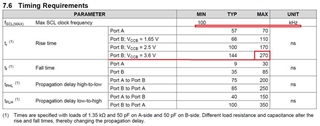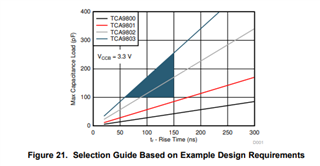Hi Team,
Greeting! Customer wants to check with us whether below usage is acceptable or not?
Actual usage:
I2C SCL clock frequency is 30kHz, VCCB is 3.3V. In this condition, what the max rise time for VCCB?
Below is datasheet screenshot about above part, just for your easy checking.

Waiting for your response.
B&R
Stanley


